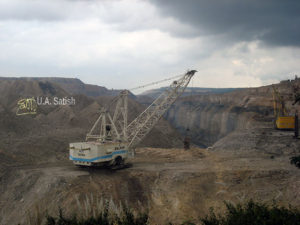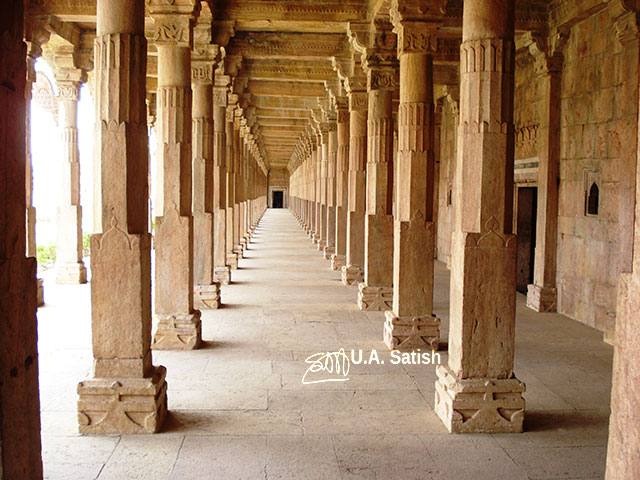
Mandu is a ruined city in the Malwa region of Madhya Pradesh. This fortress town is 94 km from Indore, a drive of 1 hour 55 minutes without traffic. The fort walls enclose a number of palaces, mosques and temples. Picturesque Mandu is famous for its Afghan architecture.
Hoshang Shah‘s tomb in Mandu may have been India’s first marble building. The tomb has a crescent of Persian origin at the top. The structure reportedly served as a model for Shah Jehan’s Taj Mahal. Hoshang Shah (1406–1435) was the first formally appointed Sultan of the Malwa Sultanate.
The Tragic Story of Queen Rupmati
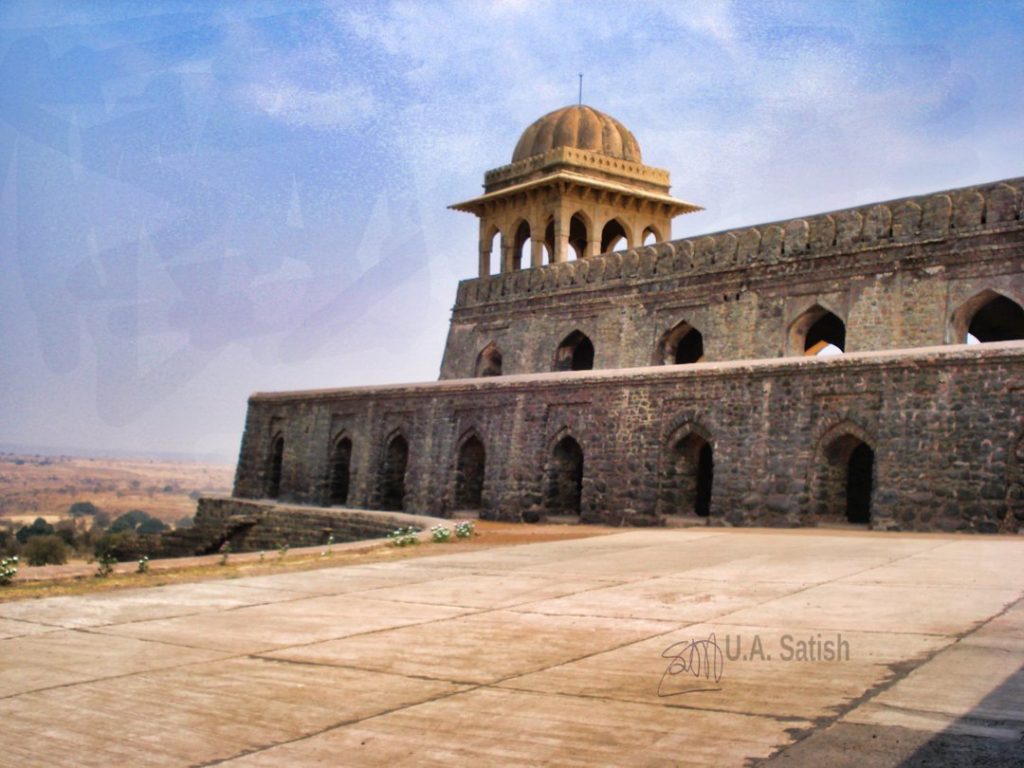
According to legend, Rupmati Pavilion was erected by Baz Bahadur because he wanted to persuade Rupmati, a beautiful Hindu singer, to move to Mandu from the plains.
Sultan Baz Bahadur was the last independent ruler of Mandu. When he was on a hunting trip, he chanced upon Rupmati. Her beauty bowled over Baz Bahadur. He asked Rupmati to accompany him to Mandu. Roopmati agreed on the condition that she would live in a palace within sight of her beloved river Narmada. Thus was built the Rewa Kund at Mandu.
However, the romantic story had a tragic end. Mughal Emperor Akbar sent Adham Khan to capture Mandu. Baz Bahadur challenged him with his small army. But Mandu fell easily. Adham Khan then cast his eyes on the beautiful Rani Rupmati. In utter desperation, Rupmati poisoned herself and avoided capture.
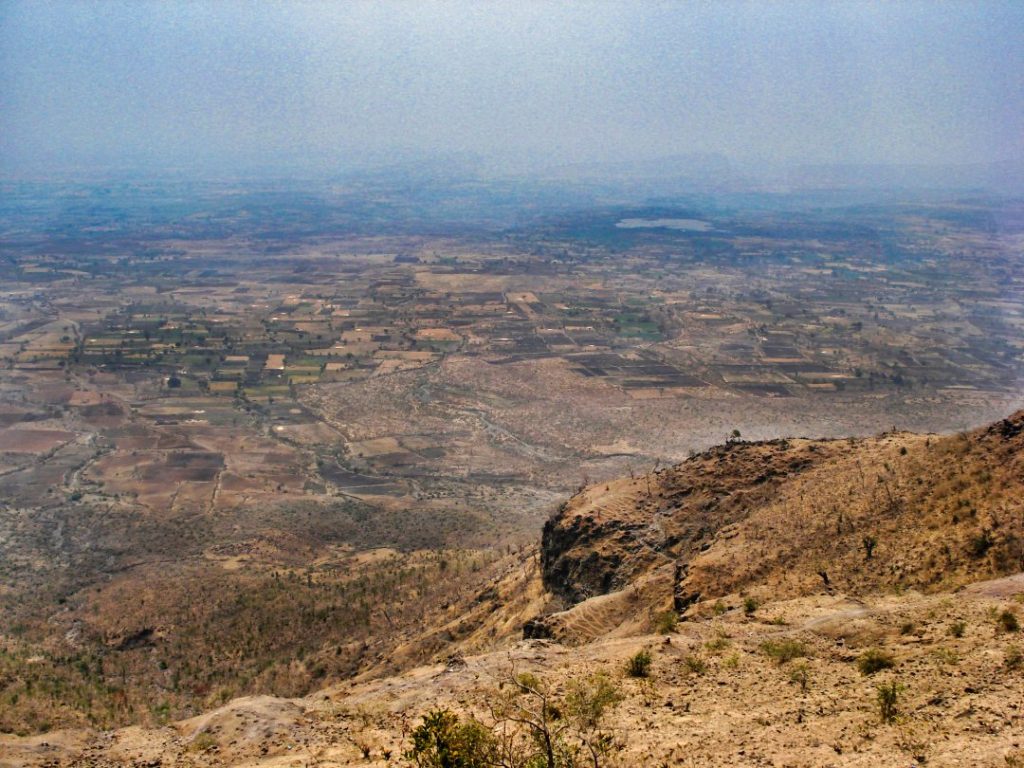
Rupmati Pavilion is on a rocky cliif, 366 metres above a vast plain. From its domed pavilions, you can catch a glimpse of the sacred Narmada river in the distance. The surrounding areas look barren and sparsely populated.
Swing Palace or Hindola Mahal
The Hindola Mahal, meaning Swing Palace, got its name from its sloping side walls. Mughals used it as a place of leisure. The Hindola Mahal might have been constructed during the reign of Hoshang Shah, about 1425 C.E. It probaly served as an audience chamber.
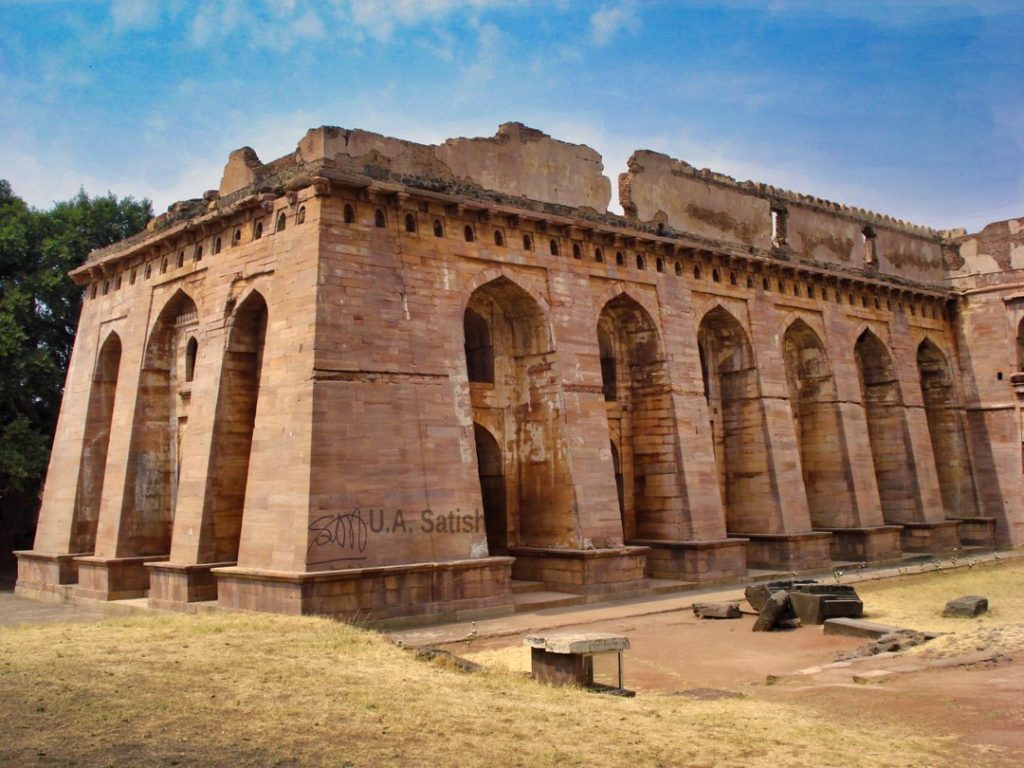
Jama Masjid at Mandu
This large red-stone structure was supposedly inspired by the Omayyed Mosque in Damascus, Syria. It is visible even from a distance due to its dominant size. Jama Masjid is probably the finest and largest example of Afghan architecture in India.
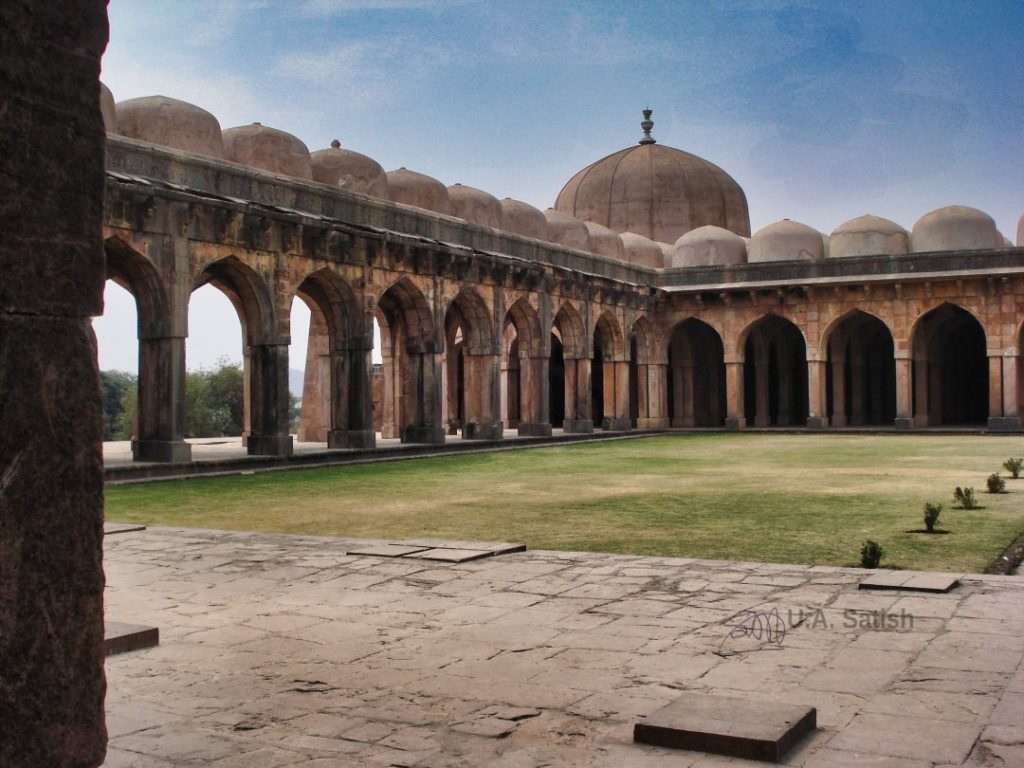
The bulls pull the grinding stone behind them and go around endlessly in circles. This age-old way of making lime mortar still continues in Mandu.
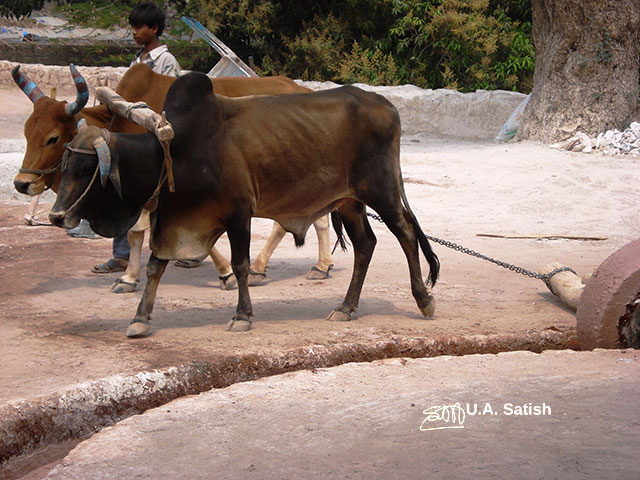
Jahaz Mahal
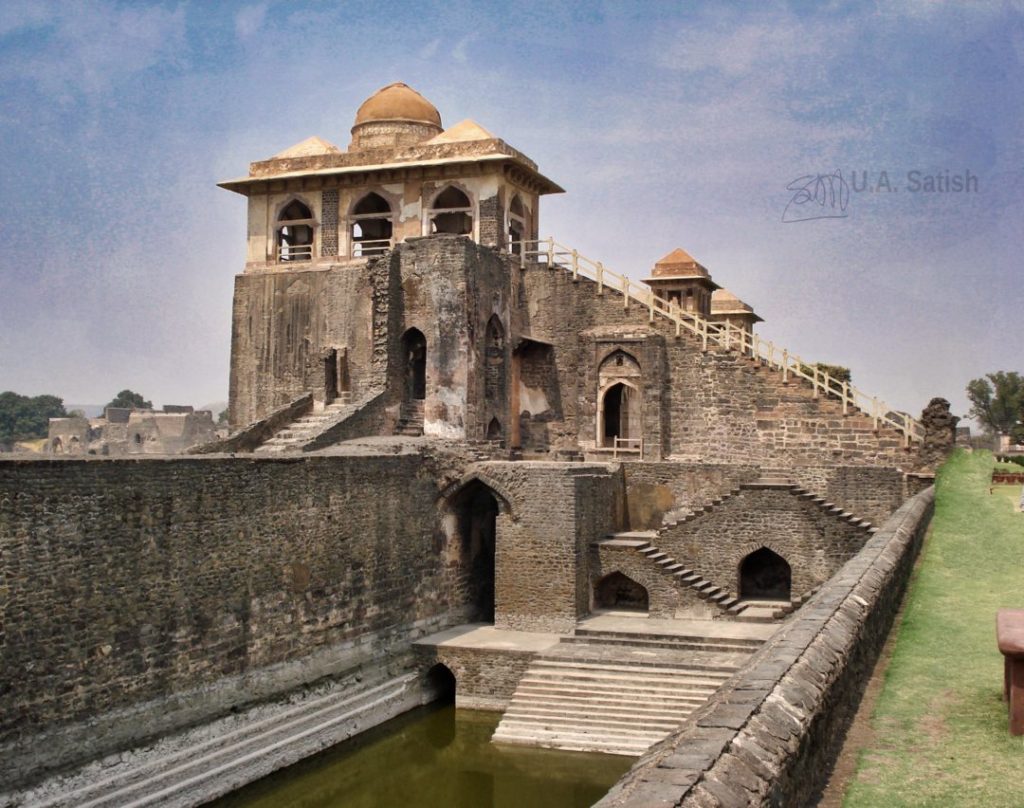
Built in the fifteenth century, Jahaz Mahal is the most famous building in Mandu. It is on a narrow strip of land with a small upper storey like a ship’s bridge. It was created by Sultan Ghiyas-ud-din Khilji who is reputed to have had a harem of 15,000.
Step Well in Mandu
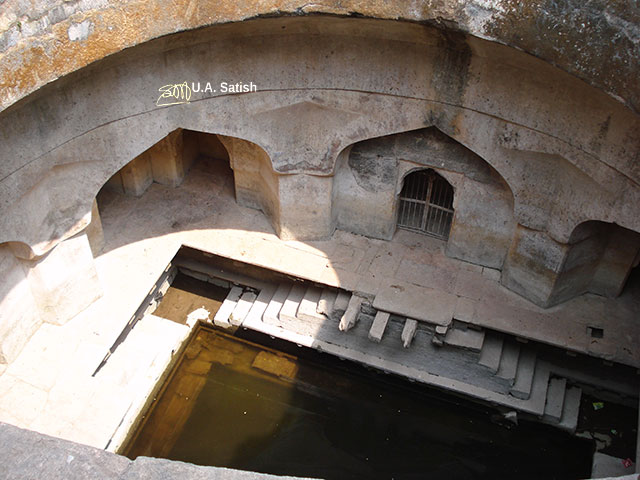
Turkish baths inspired Champa Baoli, the intricate step well. It was named Champa Baoli because the aroma of the waters was believed to resemble that of the Champa flower.
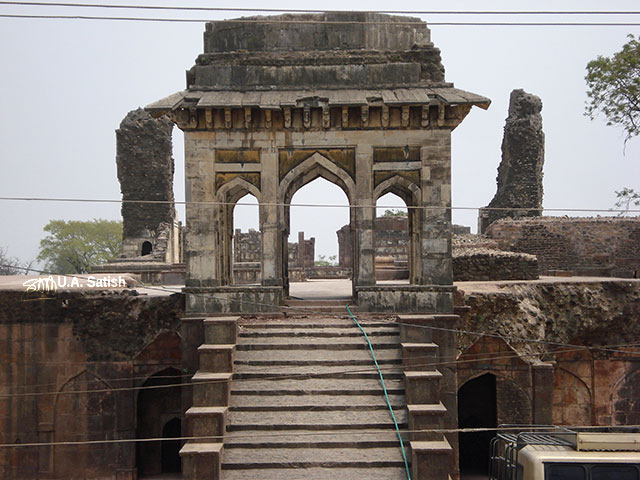
Ashrafi Mahal was initially a madrassa before Mahmud Shah Khilji decided to convert it into his own tomb. The building is an empty shell, but intricate pillars can be seen at the top of the stairs.
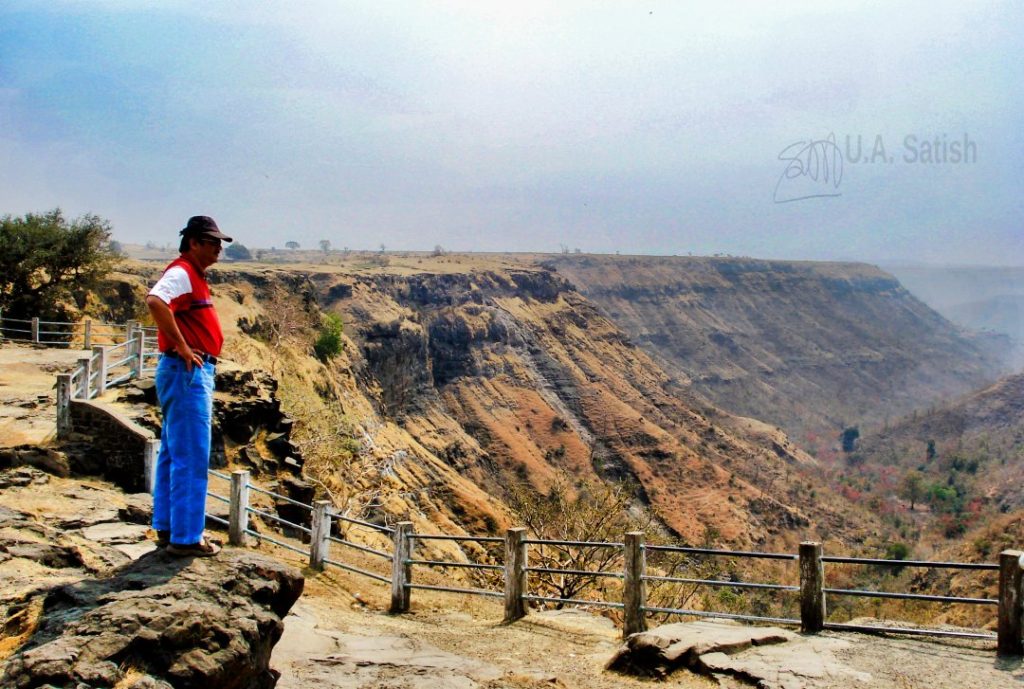
Malwa occupies a plateau of volcanic origin. There are deep ravines in the area. Vegetation is sparse and trees grow only at the bottom of the gorges.
If you liked the post, you could…
Read more stories and get updates on my Facebook page.
Subscribe to the free and informative e-newsletter.
Read this next
